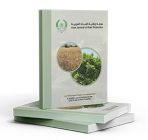R.N. Yousef*, H.A. Khalil, Y.H. Mohamed and A.M. Al-Abdallah
Plant Protection Department, Faculty of Agriculture, Homs University, Homs, Syria.
*Email address of the corresponding author: [email protected]
Received: 5/3/2024; Accepted: 30/7/2024
A Regional Scientific Journal Published Four Times a Year by the Arab Society for Plant Protection
R.N. Yousef*, H.A. Khalil, Y.H. Mohamed and A.M. Al-Abdallah
Plant Protection Department, Faculty of Agriculture, Homs University, Homs, Syria.
*Email address of the corresponding author: [email protected]
Received: 5/3/2024; Accepted: 30/7/2024
Tomato, Solanum lycopersicum is one of the important vegetables in Syria due to its nutritional, economical, industrial and export values. It is produced throughout the year due to the moderate climate conditions in the coastal regions, where greenhouse cultivation is possible without heating. Root-knot nematode is the fifth most damaging disease in the world that infects tomatoes in greenhouses. In this research, the effect of the acetone extract of Oleander leaves, the seeds and fruits of Storax officinalis, Storax seed powder as a soil additive, and the bio-pesticide Trichoderma, were compared with the nematicide nemake-30 (Imicyafos 30%), on the vegetative growth of nematode-infected tomato plants and on the southern root-knot nematode (Meloidogyne incognita) infection in comparison with the healthy control and untreated infected control. The best effect on vegetative growth of tomato plants was obtained from the oleander leaf extract treatment, as it caused an increase in all studied indicators compared to the untreated infected control. The average flower clusters, number of fruits, plant length, stem diameter, fruit weight, fresh shoot, root weight, and root length indicators were 5, 25, 162 cm, 5 cm, 533.3 g, 515 g, 137.7 g, and 56 cm, respectively, whereas the average values of the same indicators in the untreated infected control were: 4, 21.3, 130 cm, 2.7 cm, 223.3 g, 281.7 g, 124.7 g, and 51 cm, respectively. The Storax fruit extract treatment had a greater effect on infection indicators than the rest of the treatments, as it caused a significant decrease in all infection indicators compared to the untreated infected control.
Root-knot nematode, acetone extracts, Nerium oleander, Styrax officinalis, Trichoderma, nemake-30.

